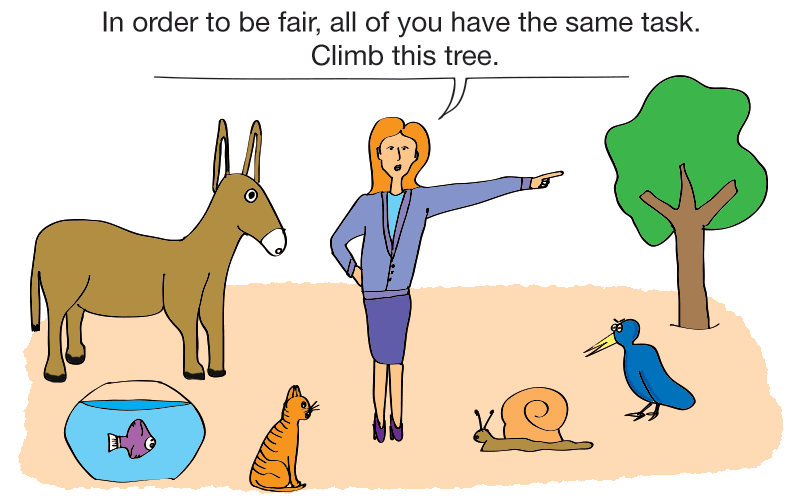All of us perceive the world through our individual five senses. Research has shown however, that we each have preferred modalities, (sensory channels, or pathways), which we utilize more frequently, and with more success. These preferences deeply affect our ability to understand, learn and communicate. The 3 modalities can be identified as visual, auditory and kinesthetic. In today’s competitive world the ability to identify and utilize these different modalities has become essential to successful and professional communication.
As instructors, we have an obligation to identify and address the individual learning needs of each participant in our sessions, to ‘pick them up where they are’ and offer a learning experience in their individual preferred modality – be it visual, auditory, or kinesthetic. It is then possible to further lead participants to a situation where they can also experience learning in modalities beyond their own. The result; learning is accelerated, deepened, and has a long lasting effect.
It is equally important for instructors to know their own learning preferences as this is also their teaching preference. For example, auditory instructors will tend to explain the content by talking, and forget to include visual references (visual modality), or the opportunity to try things out (kinesthetic modality). By understanding learning styles, you can create a learning experience in which everyone can learn from you rather than only those who also share your preferred learning preference/style/modality.
Once we are aware of our own natural learning preference, we can begin to expand the way we learn and deepen our learning experience. As instructors, we can develop our ability to use a variety of teaching approaches in order to reach all.
From the large selection of acknowledged learning style models, AOC has chosen the oldest and most reputable in education; Learning Styles from Dunn & Dunn. Since their original work in the 1960’s, this method has been further developed by many psychologists and educators, e.g. Bandler and Grinder, Markowa, Hill, and others. The Dunn & Dunn model is widely used in business and education today. At AOC we consult this learning model, in combination with hemispherology (brain dominance), as described in the Index of Learning Styles from Felder and Silverman (1980), in designing our learning programs.
The sensory based styles include the visual, the auditory and the kinesthetic.
Visual learners: Prefer graphs, pictures, and diagrams. They look for visual representations of information.
Verbal learners: Prefer to hear or read information. They look for explanations with words and the opportunity to talk.
Kinesthetic (or Active learners): Prefer to manipulate objects, engage in physical experiments, learn by doing. They enjoy working in groups to figure out problems.
The olfactory (smell) and gustatory (taste) senses are a part of the kinesthetic learning style. These learners are attracted to smells and tastes. In a learning setting where smells/tastes are present, either in the room or in some way included within the content, learning is easier and participants enjoy better retention of the materials presented.
Brain dominance styles include:
Global learners: These learners understand the big picture first and then they can fill in the details. They grasp information holistically.
Sequential learners: Start with the details. By first putting the details together, Sequential learners can then build a big picture. They want to have the information presented in a linear and orderly manner.
Sensory learners: Want to have the facts in concrete, practical, and procedural information.
Intuitive learners: Prefer conceptual, innovative, and theoretical information. They look for the meaning.


